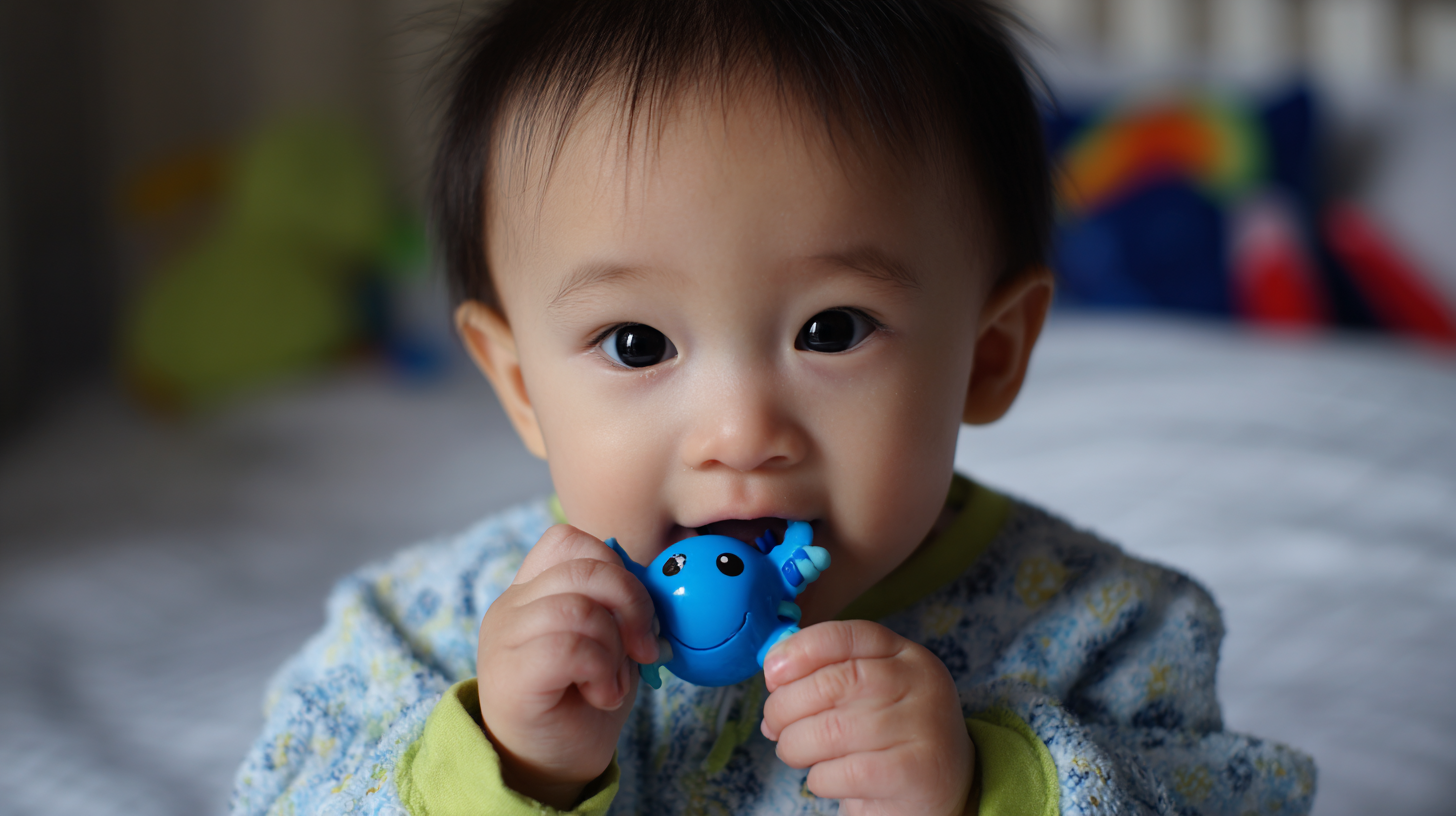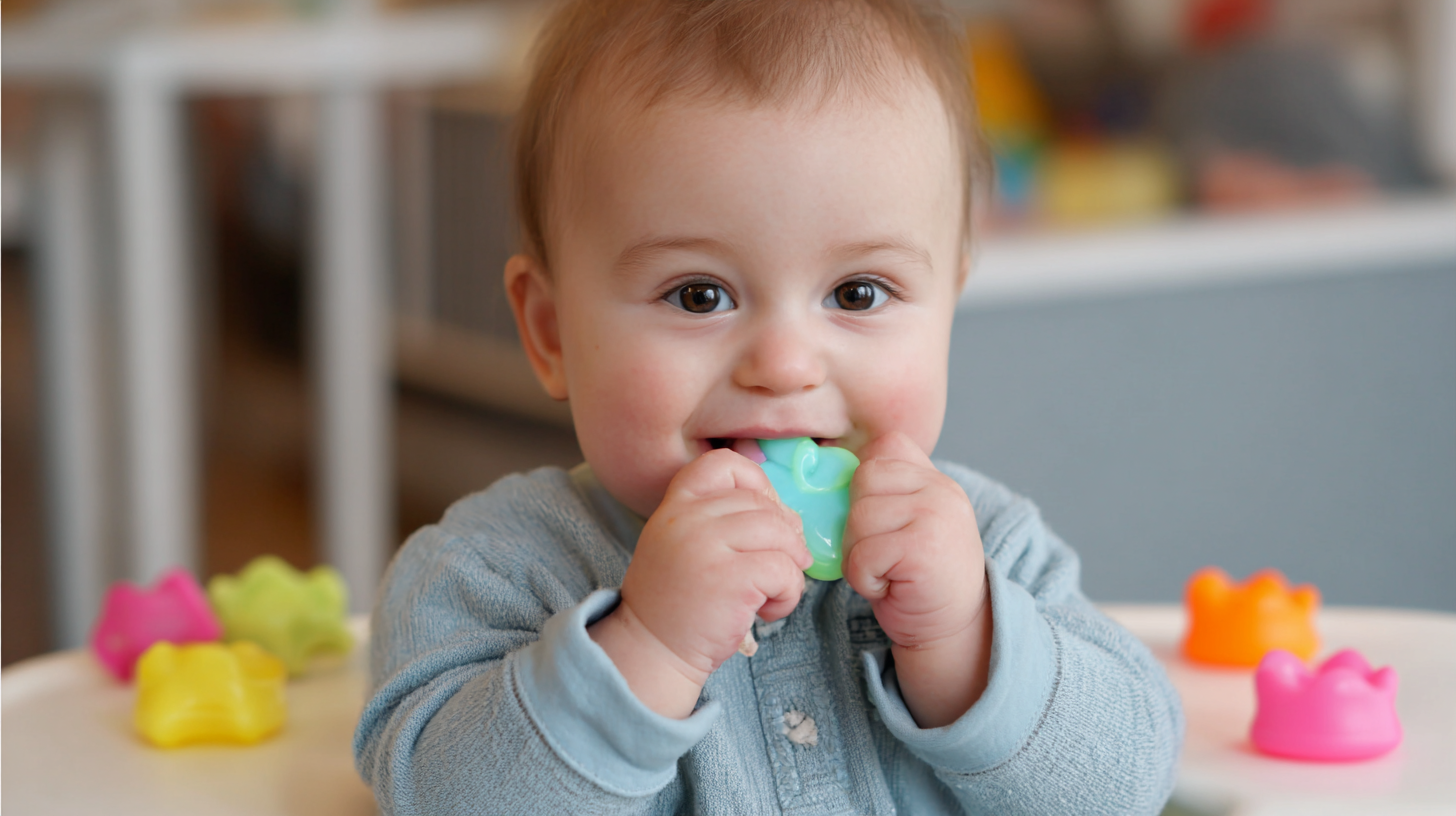
Leading Factory for Best Baby Teethers Shaping Global Trade Partnerships Today
As the global demand for baby teethers continues to rise, industry experts predict a significant transformation in manufacturing practices and trade partnerships, leading us into a new era of innovative solutions and strategic collaborations. According to a recent market analysis, the global baby teether market is projected to reach over $2 billion by 2025, reflecting a compound annual growth rate (CAGR) of 6.5% from 2020. This growth is driven by evolving consumer preferences for eco-friendly and safe materials, alongside a surge in awareness about infant oral health. To stay ahead in this competitive landscape, manufacturers must adopt cutting-edge technologies and implement robust strategies that emphasize sustainability and quality. As we delve into the industry 2025 technology trends and top strategies for success, we will explore how leading factories are shaping global trade partnerships to cater to the burgeoning market for baby teethers.

The Rise of Eco-Friendly Materials in Baby Teether Production by 2025
The baby teether market is poised for significant transformation, particularly with the increasing adoption of eco-friendly materials in manufacturing. As of 2024, the global market size is estimated at $647.28 million, with projections indicating a rise to $672.84 million in 2025 and an impressive $978.82 million in the coming years. This growth trajectory aligns with the rising consumer demand for sustainable and safe products, as parents increasingly prioritize their children's health and environmental impact.

Eco-friendly materials, such as natural rubber and organic cotton, are becoming key components in the design and functionality of baby teethers. By 2025, the industry is expected to shift towards greater sustainability, with manufacturers exploring innovative methods to reduce plastic use and enhance biodegradability. This trend not only addresses consumer concerns about toxic substances but also positions brands as responsible corporate citizens committed to creating a cleaner environment for future generations.
As the market evolves, transparency will be crucial—similar to the recent developments in food safety where QR codes are enabling parents to access information about potential heavy metal content in baby food. The push for sustainability in baby teether production is clearly a reflection of broader changes in consumer values and market demands.
Market Trends: Projected Growth Rates for the Global Baby Teether Market
The baby teether market is witnessing remarkable growth, reflecting a burgeoning demand for effective solutions to soothe teething infants. According to a recent market study, the global baby teether market size was valued at $647.28 million in 2024 and is expected to surge to an impressive $978.82 million by 2032. This projected growth is indicative of the increasing awareness among parents about the importance of quality products that not only alleviate teething discomfort but also promote healthy oral development.
As manufacturers innovate to cater to evolving consumer preferences, various design and material advancements have emerged in the teether market. Additionally, the diverse range of products available today—from traditional rubber teethers to modern silicone options—ensures that parents can find safe and appealing choices for their infants. The strategic emphasis on sustainability in sourcing also plays a crucial role, as eco-conscious consumers seek products that align with their values. With these trends driving the industry, businesses venturing into the baby teether space are positioned for substantial opportunities in the years ahead.
Key Players in the Baby Teether Industry and Their Trade Partnerships
The baby teether industry has seen significant growth, driven by an increasing awareness of infant health and safety among parents. Key players are now focusing on innovative materials such as silicone, rubber, wood, and plastic to cater to diverse consumer preferences. The demand for various shapes and textures has prompted manufacturers to diversify their product ranges, encompassing not only traditional teethers but also multi-functional toys. This evolution in product design is essential to attract discerning parents seeking quality and safety for their little ones.
Trade partnerships are critical in this competitive landscape. By collaborating with suppliers and retailers, leading companies in the baby teether market can expand their reach and improve distribution networks. Moreover, strategic alliances allow brands to share knowledge and expertise, fostering innovation and enhancing product offerings. As the market continues to evolve, these collaborations will play a pivotal role in shaping the future of the baby teether industry, ensuring that products meet both regulatory standards and consumer expectations.
Consumer Preferences Driving Innovation in Baby Teether Designs
The baby teether market is experiencing a transformative evolution driven by changing consumer preferences and innovative design. According to recent industry analysis, the market size for baby teethers has been steadily increasing, reaching an impressive valuation projected at over $1 billion by 2025. This growth can be attributed to a surge in demand for safe, non-toxic materials such as silicone and wood, as parents increasingly prioritize the health and well-being of their children. Notably, silicone is favored for its durability and ease of cleaning, while wooden teethers offer a natural aesthetic that appeals to eco-conscious consumers.

Moreover, the Direct-to-Consumer (D2C) model is reshaping how baby teether brands connect with their audiences. With D2C sales expected to grow exponentially, brands are leveraging personalization to stand out in a crowded market. Tailoring products to meet specific consumer needs not only enhances brand loyalty but also aligns with a trend towards individualized shopping experiences. As companies analyze data on consumer preferences, innovative designs that cater to both functionality and style are emerging, further solidifying the market's expansion and the global trade partnerships that facilitate it.
The Impact of Regulatory Changes on Baby Teether Manufacturing Standards
Regulatory changes have significantly influenced the manufacturing standards within the baby teether market. As parents increasingly prioritize safety, compliance with these evolving standards has become essential for manufacturers. Reports indicate that the global baby teether market is projected to reach approximately $1.5 billion by 2026, driven by the rising demand for non-toxic, eco-friendly materials like silicone, wood, and natural rubber. This shift in consumer preference has prompted manufacturers to adapt their production processes to meet stringent safety regulations while ensuring quality.
The FDA's regulations on baby food, which include lead limits, also extend their influence towards products like baby teethers. Parents are advised to look for teethers that comply with safety certifications that limit hazardous substances, including phthalates and heavy metals. Research shows that products made with high-quality silicone and wood are among the safest options available. As a result, manufacturers are not just focused on aesthetics but also on delivering safe, regulatory-compliant products that promote healthy development during a child's teething phase. The industry's response to these concerns will shape its future as consumers demand transparency and accountability in product safety.
